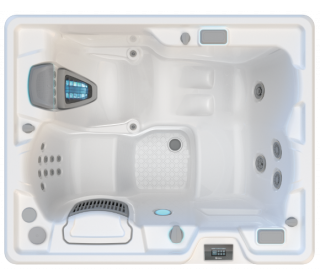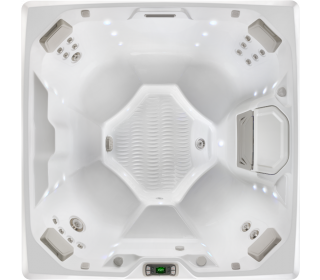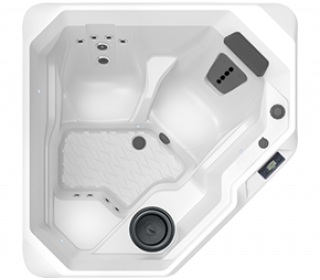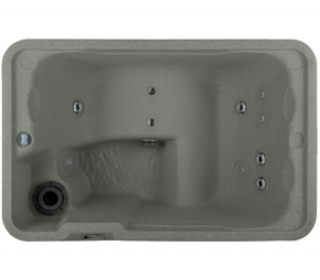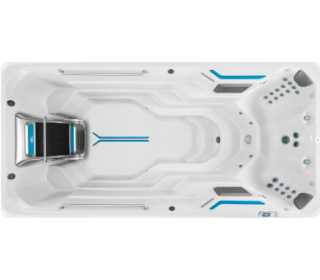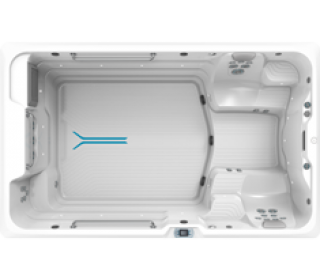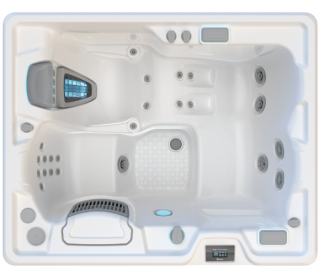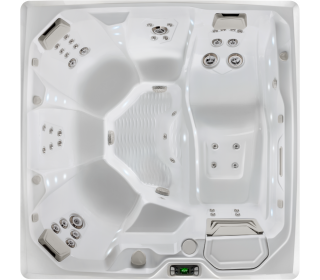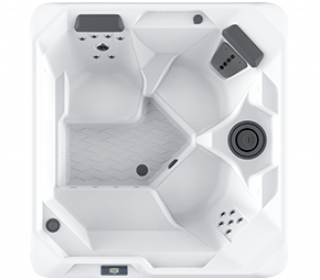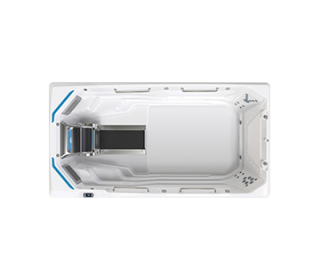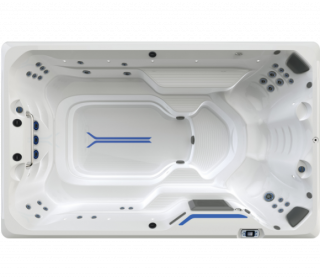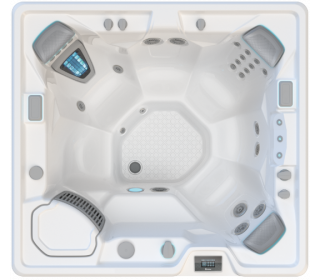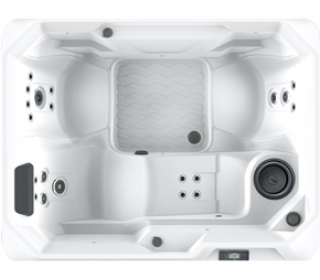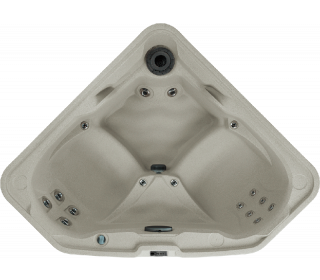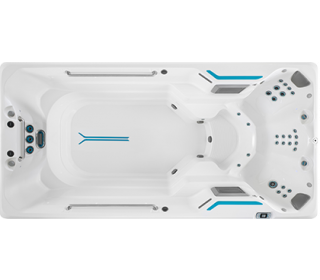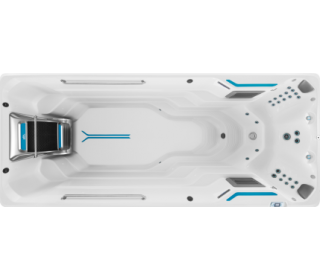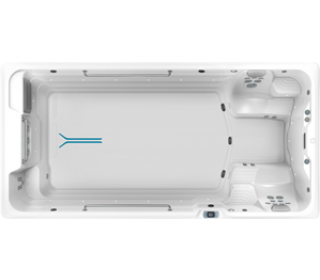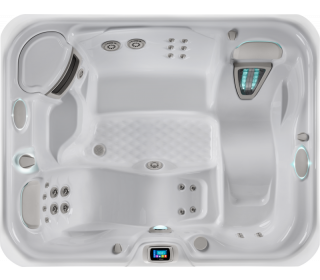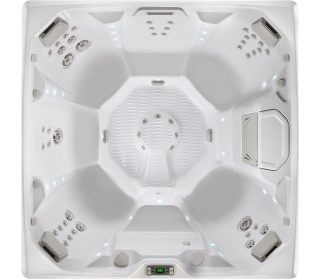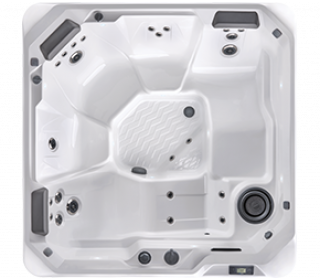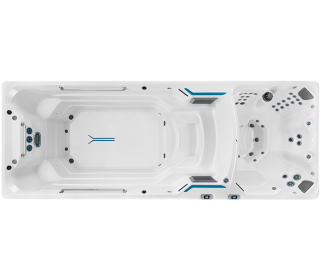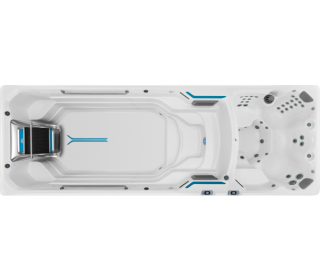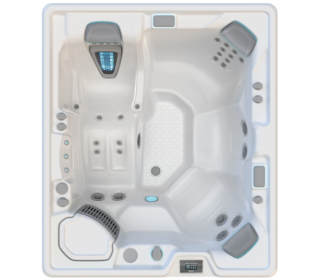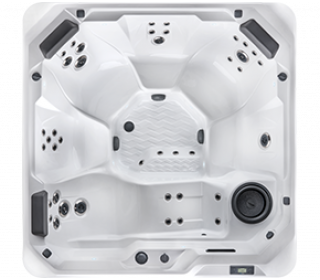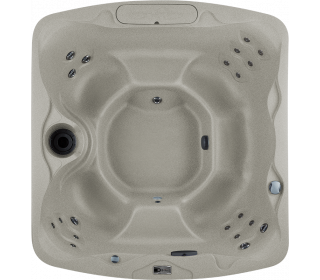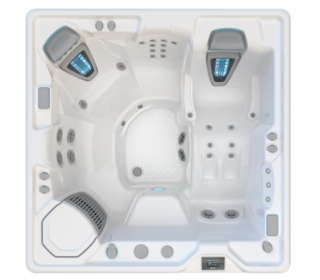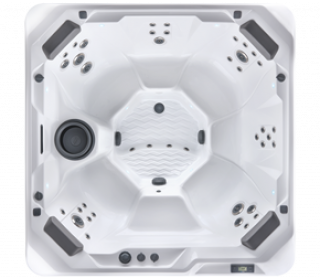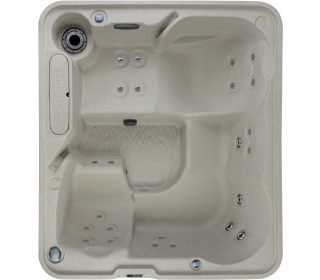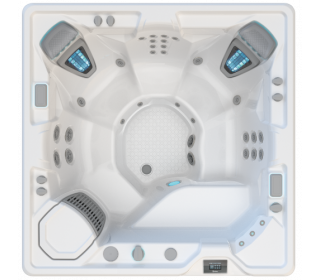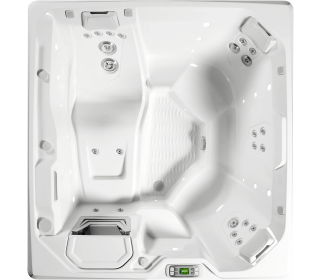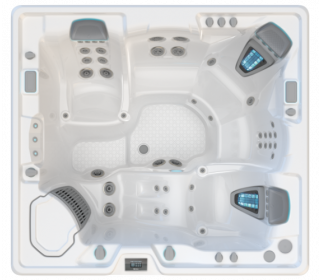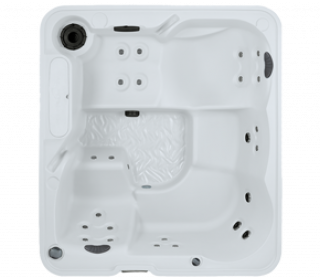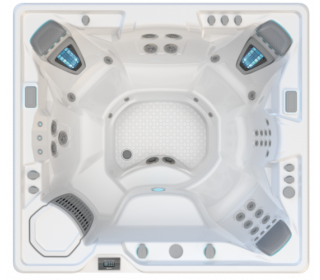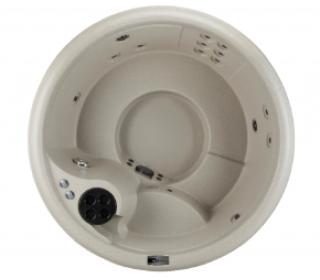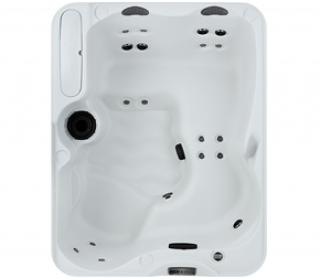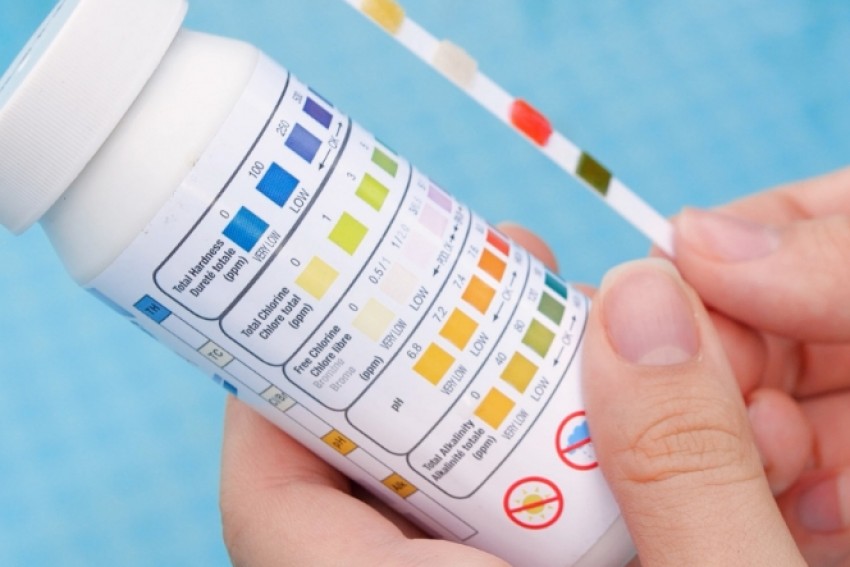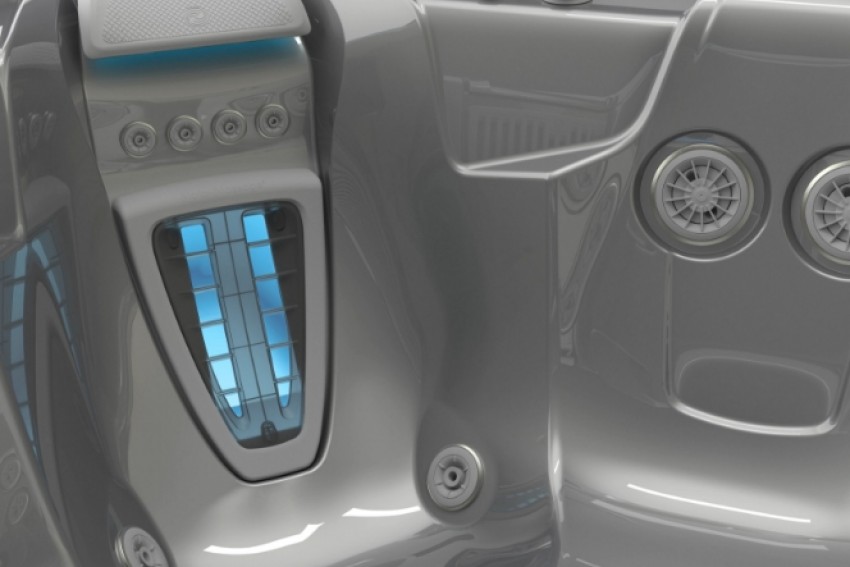Hot tubs are an amazing source of relaxation and leisure for people throughout the world. Whether you are using your brand new tub to relax tense muscles or just to simply destress from the day, you will want to make sure you are putting the right chemicals in the very first time you use it to ensure safety for you and your family.
But what chemicals are needed for a hot tub?
The chemicals you will need to start your hot tub include a pH increaser, pH decreaser, calcium hardness, a metal removal (if using water from rainwater tanks or bore) and a sanitiser. The chemicals have to go in a certain order for the process to work. Your final goal should be to balance your pH level between 7.4 and 7.6 and your alkalinity between 100-200 parts per million.
If you just bought a brand new hot tub, chances are you are really excited about your new purchase and want to do everything you can to make it a safe and fun experience for you, your family and your guests. Keep reading to learn the exact chemicals, methods and tips for starting your hot tub for the first time.
While the chemicals you’ll need to add to your spa will depend on your situation, a basic list of chemicals every spa owner should have includes:
- Spa sanitiser such as bromine or chlorine.
- A pH increaser and decreaser such as FreshWater® pH/Alkalinity Up and FreshWater® pH/Alkalinity Down
- Spa shock solution, such as chlorine or MPS.
Can I use my hot tub without any chemicals?
First things first: do you even need chemicals? What happens if you use a spa pool without chemicals?
Initially not much will happen at all. If you fill your spa and heat the water you’ll enjoy a lovely introductory soak.
The issues will begin slowly, rearing their head after a day or two, before becoming exponentially worse as time goes on. It will start with a slight odour and an accumulation of bubbles when you use the jets. The water soon becomes cloudy and discoloured, and the smell intensifies. Soon you begin to spot algae and mould in your spa, as bacteria, fungus and other intruders take your machine over.
A spa pool is not like a spa bath – you don’t drain it after every use. You need your water to last, and if you want the finest soaking experience possible, you want that water to be clean, clear, soft and fresh. Hot tub chemicals are built to deliver exactly that.
Cleaning the Hot Tub Before Starting It
It is also important to properly clean all areas of the hot tub that are exposed to water before you start pouring chemicals in there for the first time. Use a soft cloth and non-abrasive cleaner to wipe down the shell and cover of the hot tub. Make sure to rinse thoroughly to reduce foaming.
Spa Metal Removal:
Metals are often present if you’re using bore or rain water to fill your hot tub. When starting your hot tub for the first time, it is a good idea to use a metal remover to neutralise your water before putting in any further chemicals. The best system to use is the Fresh Start® Clean Screen filter that attaches to your hose as you fill your hot tub with water. Note that this step is not required if you are using water supplied by the council.
Calcium Hardness:
Calcium Hardness is the total amount of magnesium and calcium dissolved inside the water of your hot tub. Measuring the calcium hardness lets you know how much calcium is present in your water. Taking this step is important because low levels of calcium hardness can lead to damage and erosion of your hot tub. Therefore, you will want to add calcium hardness when starting your hot tub to make it level at the recommended range. The recommended range of calcium hardness for a hot tub is around 15-400 parts per million.
Chemicals To Put In When Starting Your New Hot Tub
Before putting in any kind of chemicals, the first step is to fill your hot tub with water. After filling your tub, you can check for chemical levels. Different hot tubs come in different sizes and brands. The amount of chemicals you will use for the start-up process will vary depending on the size and brand of the tub. You need to know how many litres of water your hot tub will hold. You can usually find this information in the user manual that comes with the hot tub. The owner manual also has recommendations for how much water to use with the specific chemicals needed to start a hot tub.
What chemicals are needed for a hot tub that you’ve just filled for the first time? Common chemicals used to clean the water when you first fill your hot tub include chlorine and bromine, while other chemicals, like pH and alkalinity balancers, are used to make your water more comfortable to soak in.
How to treat new hot tub water
After filling your hot tub with water, you will want to adjust your pH level and complete alkalinity. You can purchase tester strips to help you balance the pH level and alkalinity. You simply add the pH increaser or pH decreaser as needed until the tester strip shows the pH level to be between 7.4 and 7.6. Similarly, the alkalinity should be between 100-120 parts per million.
You must balance your pH level before moving onto the next step of the process which is adding a sanitiser to the water. If your pH level is not balanced, the sanitiser might not be effective. When you are adding chemicals to the water, you will want to turn on all of the therapy pumps and spread the chemicals evenly throughout the water.
Are swimming pool and hot tub chemicals the same?
“What chemicals are needed for a hot tub?” you might ask? The answer is not swimming pool chemicals. This is a common misconception and can be a costly one.
It’s important to note that swimming pool chemicals and hot tub chemicals are very different, and are not interchangeable. They are really designed for two very different jobs: one where a large pool of water sits at relatively stagnant and at a relatively low temperature, and one where water is enclosed, heated and pumped through high pressure jets.
If you use swimming pool chemicals in your spa pool, you risk doing real and costly damage to the machine, and the opposite is also true. Always purchase spa pool-specific chemicals to ensure your spa lasts the distance, and your soaking experience is as good as it can be.
What to put in a hot tub after filling it
After your hot tub has reached the recommended pH and alkalinity levels, the next step is to sanitise the hot tub and the water. Here’s what to do after filling a hot tub. First, what chemicals are needed for a hot tub? There are many different types of sanitisers. The main forms of sanitisers are chlorine, bromine, minerals and salt systems. Each type of sanitiser comes with its own advantages and disadvantages.
Chlorine
Chlorine is the most commonly used sanitiser because it offers several advantages over the others. Chlorine is more cost-effective than non-chlorine sanitisers. It is also easily manageable making it a convenient option. Chlorine is also a very aggressive algae and bacteria killer so it gets the job done well. It can be compared to how effective bleach might be at killing bacteria in your bathroom. The downfall of chlorine is the strong scent that comes with it. A common misunderstanding around chlorine is that the smell results from the actual chlorine itself. The smell comes from waste products called chloramines. Chloramines are formed during the oxidising process that happens when chlorine kilts contaminants by breaking down the chemical components. If you can smell the strong scent that chloramines give off, chances are you need to add more chlorine in your water because it got used in the oxidising process.
Bromine
The use of bromine in an automated sanitation system is banned in certain countries as well as some states in the USA. Bromine salt systems require up to a staggering five times more chemicals to operate than our FreshWater™ Salt System. These chemicals are harsh on the skin, emit a strong odour and lead to users requiring a shower following their spa. Contaminants end up staying in the water for a longer period of time before being destroyed so you will have to wait longer to accurately test your water levels. You should also be very careful not to use too much bromine when sanitising your tub because bromine can build up over time. Bromine also burns off way quicker under the hot sun because it is unstabilised. Therefore, choosing a chlorine sanitiser for an outside tub might be more effective.
Minerals
Mineral sanitisers use either a bactericide (silver) or algaecide (copper) to sanitise the hot tub. Using a mineral-based sanitiser allows you to use less chlorine so the water will be more gentle on your skin. However, minerals can not successfully sanitise the hot tub by themselves. You will need to add at least some chlorine if you want to properly sanitise your hot tub. Minerals are not that expensive but if you take into account that you will also need to purchase chlorine, the final cost could still be high. You can still eliminate the negative scent that chloramines produce when you use minerals because you will be using very little chlorine. Also, minerals can be easily managed. They come in a pre-packaged dosing stick. All you have to do is add the stick to your filter and replace it every three or four months.
Getting a brand new hot tub is a very exciting moment for most customers. The best way to ensure safety for yourself, your guests, and the hot tub is to use a pH increaser, pH decreaser, metal removal (if using bore water), calcium hardness and a form of sanitiser when starting your hot tub for the first time.
How long can hot tub water go untreated?
The short answer is not long at all. If you fill your hot tub with fresh water, it may begin to turn stale, smelly, cloudy and unsafe in as little as a few days.
The reason is simple: a hot tub is constantly bombarded by invaders like bacteria, viruses, algae, mould and fungus, whether dropping in from the air or catching a ride on the skin of someone who soaks. And as a warm and moist place, a hot tub also offers the perfect conditions for these microorganisms to thrive.
This can quickly turn an untreated hot tub into a dangerous place to spend your time. Making the hot tub safe again can be hard work – it usually involves a chlorine shock treatment that kills everything in the tub, but that also renders the machine unusable for a period of time. In some cases you may need to empty your hot tub, give it a thorough clean, and refill it with fresh, sanitised water.
If you haven’t treated your hot tub water, you should do so immediately. You should also check for the telltale signs of unsafe water: a bad smell, cloudiness, or the presence of mould and algae.
Hot Spring Spa Care Starter Kit
The Hot Spring Spa Care Starter Kit includes all that a new hot tub owner needs to get their new machine ready for a soak: concentrated chlorinating granules, MPS oxidizer, pH up, pH down, defoamer, stain & scale and five-way test strips. A spa water maintenance and troubleshooting guide is also included to guide you through the process of using the kit.
But in short, here’s how to use clear water starter kit, the Hot Spring Spa Care Starter Kit, or indeed any kit with similar contents:
- Fill your hot tub and get the water to around 20C.
- Add one teaspoon of chlorinating granules for every 400 litres of water.
- Give the chlorine 30-60 minutes to dissolve and mix into the water.
- Use the test strips to check chlorine levels. These will start high, but over time they will drop. Aim for 2-3 parts per million. Keep checking the water regularly, and when the chlorine hits that 2-3 ppm level, it’s ready for you to enjoy.
- Initially you should use the test strips before every soak to see where your chlorine, pH and alkalinity levels are sitting. If chlorine is too low, add a little more. If chlorine is too high, wait until it drops to an appropriate level, or drain a little of the hot tub water and add more fresh water. If pH or alkalinity is off, use the pH up or pH down chemicals to balance the levels.
At Hot Spring we offer the complete range of the hot tub chemicals you need to create the ultimate soaking experience. From filling and treating your spa for the first time, to keeping your water clean, clear, soft and fresh for longer, our experts can make sure you have the chemicals you need, and are always ready to give you guidance on how to best use them given your specific model and the conditions of your local area.
And if you find all this talk of chemicals a little overwhelming, you can choose to hand us total responsibility for your hot tub – our valet service sees us take care of all things maintenance, allowing you to sit back, relax, and enjoy a perfect spa, every time.
Get in touch with your local Hot Spring dealer today to find out more.
FAQs
Q: How much chlorine do I add to the hot tub the first time?
A: ‘How much chemical to put in hot tubs’ is the same as asking ‘how long is a piece of string’: it depends. Hot tubs vary in size and come with different water care systems – Hot Spring spas fitted with a FreshWater Salt or FreshWater Ozone System will use less chemicals because the salt/ozone takes care of a lot of the sanitising.
That said, there are a few general rules that can guide you on how much chemicals to add. When you fill or refill your spa pool, it needs to be treated with a relatively high dose of sanitiser – also known as a chlorine shock dose. You should aim to add 40g of chlorine granules per 1000L of water in the beginning, and let the level drop to 3-5 milligrams per litre before using the hot tub.
To gain a better understanding of how much chlorine to add to hot tubs, calculators can be found online that let you fill out the details of your specific tub, then tell you approximately how much you should add.
Q: What is the most commonly used sanitiser when starting a brand new hot tub?
A: Chlorine is the most commonly used sanitiser due to the several advantages it offers over the others. Although it comes with an odour, it is the most effective way to sanitise your hot tub.
Q: Is there a way to get around putting chemicals in the hot tub?
A: The only way to get around it is you drain the water and refill it after each use. You will also want to make sure that the water is never in the hot tub for longer than 12 hours. If you want to keep the same water for multiple uses, you should balance the hot tub using the chemicals mentioned above.
Q: How long should you wait to get in after putting chemicals in the hot tub?
A: You should wait about thirty minutes. You need to let the chemicals completely dissolve into the water.
But before you jump in you should always test the water to see if chlorine levels are sitting around the 2-3 parts per million sweet spot, as a higher reading can result in skin and eye irritation, and a lower reading can mean your spa water isn’t as safe as it should be.
Q: What chemicals are needed to start up a hot tub?
A: As mentioned above, the most common hot tub chemicals for sanitising a freshly filled hot tub are chlorine and bromine. Once these sanitisers have made your water safe to soak in, the focus turns to making the water soft, fresh and generally nice to spend time in, which is the job for chemicals like salt, ozone, pH and alkalinity balancers and foam removers.
Q: Where can I purchase hot tub chemicals suggested in this article?
A: We recommend you purchase your hot tub chemicals from a reputable hot tub supplier that stocks high quality products that do not contain fillers or bulking agents. We recommend Spa Pools Online or your local Hot Spring dealer.


